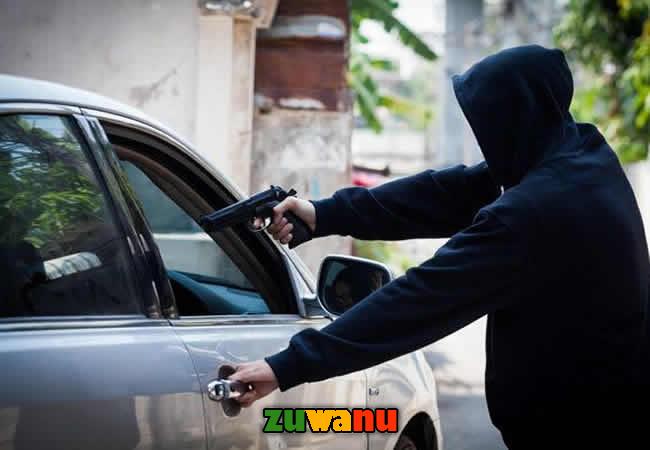Strategies to Safeguard Yourself and Your Vehicle Against Traffic Robbers
Table of Contents
Introduction
With the increasing prevalence of crime in various parts of the world, motorists face a growing threat from traffic robbers who target individuals on the road. These criminals often exploit the vulnerabilities of drivers stuck in traffic, making it crucial for everyone to be proactive in protecting themselves and their vehicles. In this comprehensive guide, we will explore a variety of strategies to help you guard against traffic robbers and navigate urban roads with greater security.
Understanding the Threat

Traffic robberies typically occur in congested areas where vehicles are forced to slow down or come to a complete stop, such as at intersections, traffic jams, or toll booths. Criminals take advantage of these situations to approach vehicles and engage in theft, armed robbery, or other criminal activities. Common tactics include breaking car windows, snatching valuables, and sometimes resorting to violence.
As drivers, passengers, and pedestrians, it’s essential to be aware of the potential risks associated with traffic robberies. By understanding the methods employed by criminals, individuals can take proactive measures to reduce their vulnerability and enhance overall safety.
Preventive Measures Before Hitting the Road
- Route Planning:
Before embarking on a journey, plan your route carefully. Use GPS apps that provide real-time traffic updates to help you avoid congested areas prone to traffic robberies. Choose well-lit and busy routes whenever possible, as criminals are less likely to target vehicles in areas with higher visibility. - Vehicle Maintenance:
Ensure your vehicle is in good working condition before hitting the road. A well-maintained vehicle is less likely to break down, reducing the chances of getting stranded in vulnerable locations. Regular maintenance checks should include the brakes, tires, and engine to prevent unexpected failures. - Visibility and Awareness:
Maintain situational awareness while driving. Be vigilant of your surroundings and keep an eye on vehicles and individuals around you. Adjust your mirrors properly to minimize blind spots, and use them frequently to stay aware of your environment.
Preventing Robbery During Transit
- Doors Locked and Windows Up:
Always keep your doors locked and windows up, especially when driving through areas with a higher risk of traffic robberies. Locking the doors makes it more difficult for criminals to gain access to the interior of the vehicle. - Valuables Out of Sight:
Keep valuable items, such as laptops, bags, and smartphones, out of sight. Stow them in the trunk or keep them on the floor of the car, making it less tempting for potential thieves. - Personal Security Devices:
Consider investing in personal security devices such as alarms, steering wheel locks, or even GPS tracking systems for your vehicle. These devices not only act as deterrents but can also assist in the recovery of stolen vehicles. - Maintain Distance:
While in traffic, maintain a safe distance from the vehicle in front of you. This provides you with the necessary space to maneuver in case of an emergency and reduces the risk of being boxed in by other vehicles. - Vary Your Routes and Timing:
Avoid predictability by varying your routes and departure times. Criminals may monitor regular patterns, making it easier for them to anticipate and plan an attack. Randomizing your routines can disrupt their ability to predict your movements. - Stay Informed:
Stay informed about the security situation in your area. Listen to traffic reports and news updates that may provide information about recent criminal activities. Being aware of potential threats allows you to adjust your route or take extra precautions. - Travel in Groups:
Whenever possible, travel in groups. There is strength in numbers, and criminals are less likely to target a cluster of vehicles. This is particularly effective when driving through areas known for high crime rates. - Emergency Contact Information:
Keep a list of emergency contact numbers in your car. This includes local law enforcement, your insurance company, and roadside assistance services. Having this information readily available can be invaluable in case of an emergency.

Responding to Threats in Real-Time
- Stay Calm:
In the event of a potential threat, it is crucial to stay calm. Panicking can impair your ability to make rational decisions and take appropriate actions. Keep a level head to assess the situation and respond effectively. - Avoid Confrontation:
If you suspect that you are being targeted by traffic robbers, avoid confrontation whenever possible. Compliance may be the safest option to protect yourself and your passengers. Resisting may escalate the situation and lead to violence. - Use Communication Tools:
If you have a hands-free communication system in your vehicle, use it to call for help discreetly. Provide your location and a description of the situation to the emergency services. Avoid using your phone visibly, as it may attract the attention of potential robbers. - Activate Vehicle Alarm:
If you sense imminent danger, activate your vehicle’s alarm system. The loud noise can attract attention and deter criminals. Many modern vehicles come equipped with alarms, but additional aftermarket alarms can be installed for added security. - Head Toward Public Spaces:
If possible, drive toward well-lit and populated areas. Criminals are less likely to carry out their activities in busy public spaces, and the presence of witnesses can discourage them from approaching your vehicle.
Guide on How to Avoid Buying a Stolen Car
Post-Incident Procedures
- Report to Authorities:
After an incident, report the incident to local law enforcement as soon as possible. Provide them with a detailed account of the events, including descriptions of the perpetrators and any vehicles involved. Timely reporting increases the chances of apprehending the criminals. - Document the Incident:
If it is safe to do so, take photographs or video footage of the scene and any damage to your vehicle. This documentation can be valuable when filing a police report and an insurance claim. - Seek Support:
If you and your passengers have experienced trauma or stress due to the incident, consider seeking support from mental health professionals. Post-traumatic stress can have lasting effects, and counseling can help you cope with the aftermath.
Conclusion
As traffic-related crimes become more prevalent, taking proactive measures to safeguard yourself and your vehicle is of paramount importance. By incorporating the strategies outlined in this guide, you can significantly reduce your vulnerability to traffic robbers and enhance your overall safety on the road. Remember that awareness, preparation, and quick thinking are key components of an effective defense against potential threats. Stay vigilant, stay informed, and prioritize your safety to ensure a secure and pleasant driving experience.
